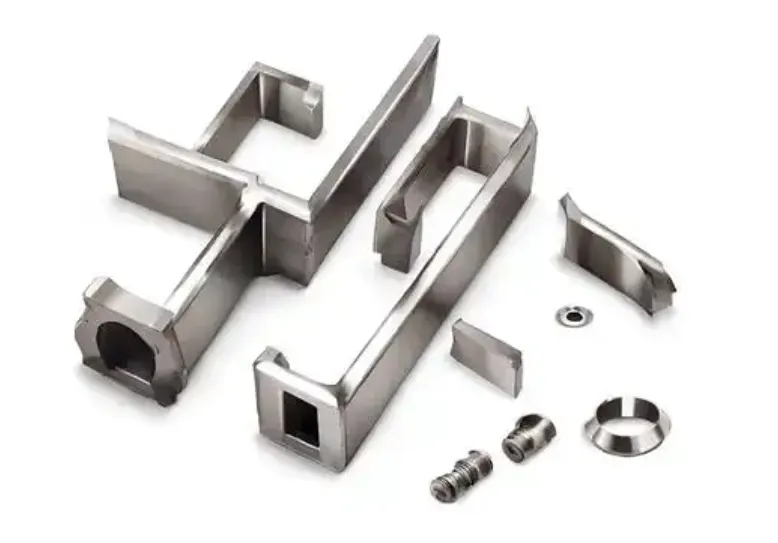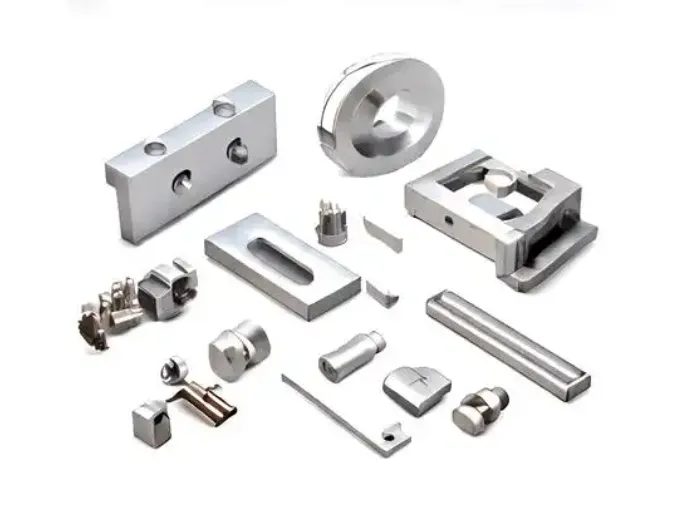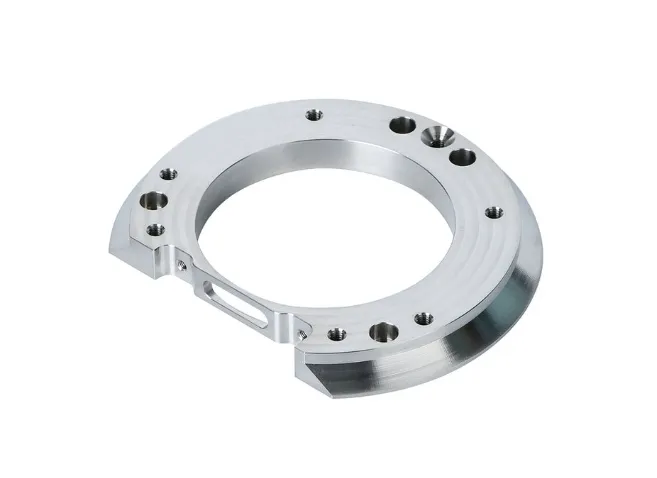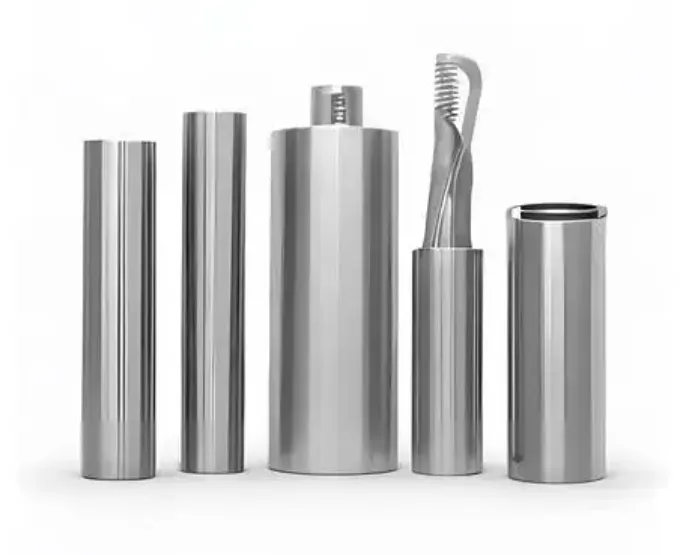A CNC router consists of numerous precision-engineered parts working in unison to execute computer-controlled cutting, carving, and machining operations across various materials. The machine’s structural framework typically utilizes heavy-duty aluminum extrusions or welded steel construction, providing the necessary rigidity to withstand cutting forces while maintaining dimensional stability during operation. Gantry systems – the bridge-like structure moving along the X-axis – employ dual drive mechanisms with either rack-and-pinion or ball screw configurations, ensuring synchronized movement with positioning accuracy within ±0.05mm for quality models. Linear motion components include hardened steel rails with recirculating ball bearing carriages that facilitate smooth axis movement, with premium machines incorporating profile rail guides capable of handling higher loads and offering greater stiffness than round rail alternatives.
 The spindle assembly represents the cutting power center of a CNC router, with common configurations ranging from 1.5kW to 15kW water-cooled or air-cooled units operating at variable speeds between 8,000-24,000 RPM. High-frequency spindles feature ER collet chucks (typically ER20 or ER32) for tool holding, maintaining runout below 0.01mm to ensure precise cutting performance. The Z-axis assembly incorporates a counterbalance system – either mechanical (gas springs) or electronic (servo-controlled) – to prevent head droop and maintain consistent cutting depth during operation. Tool changing systems on advanced routers include pneumatic or servo-driven automatic tool changers (ATCs) with carousel-style magazines holding 6-24 tools, enabling uninterrupted machining of complex parts requiring multiple tool types.
The spindle assembly represents the cutting power center of a CNC router, with common configurations ranging from 1.5kW to 15kW water-cooled or air-cooled units operating at variable speeds between 8,000-24,000 RPM. High-frequency spindles feature ER collet chucks (typically ER20 or ER32) for tool holding, maintaining runout below 0.01mm to ensure precise cutting performance. The Z-axis assembly incorporates a counterbalance system – either mechanical (gas springs) or electronic (servo-controlled) – to prevent head droop and maintain consistent cutting depth during operation. Tool changing systems on advanced routers include pneumatic or servo-driven automatic tool changers (ATCs) with carousel-style magazines holding 6-24 tools, enabling uninterrupted machining of complex parts requiring multiple tool types.
Motion control components form the nervous system of the CNC router, with NEMA 23 or NEMA 34 stepper motors being common on mid-range machines, while industrial-grade routers employ servo motors with encoder feedback for closed-loop positioning control. Drive systems convert controller signals into mechanical movement, with microstepping drivers dividing each motor step into up to 256 microsteps for smoother operation and higher apparent resolution. The controller itself – often running GRBL, Mach3, or proprietary software – interprets G-code instructions and coordinates all machine movements, with modern systems offering features like look-ahead processing to optimize toolpaths and prevent sudden direction changes that could cause mechanical stress.
Workholding and material support systems vary based on application requirements, with vacuum tables being prevalent for sheet goods, utilizing zone-controlled pumps generating 15-25 inches of mercury vacuum pressure to secure materials without mechanical fixtures. T-slot aluminum beds provide flexible clamping options for irregular workpieces, while spoil boards of MDF or phenolic resin protect the table surface during through-cutting operations. Dust collection systems – essential for maintaining visibility and component longevity – incorporate high-static pressure blowers moving 600-2000 CFM of air through 4-inch diameter hoses, with some systems adding cyclone separators to extend filter life in high-production environments.
Electrical systems distribute power throughout the machine, with 220V single-phase or 380V three-phase supplies being common for spindles above 3kW. Control cabinets house the motor drivers, power supplies, and controller electronics, featuring proper ventilation and noise filtering to ensure stable operation. Emergency stop circuits and limit switches provide critical safety functions, while proximity sensors or mechanical switches establish machine home positions with repeatability within 0.02mm. Cable management systems utilize flexible drag chains to protect wiring and hoses from damage during rapid axis movements, which can exceed 20m/min on high-performance machines.
Cooling systems maintain optimal operating temperatures for critical components, with spindle cooling loops using either recirculating chillers (maintaining coolant within ±1°C of setpoint) or air-to-water heat exchangers. Some high-power routers incorporate cooling channels in the machine frame itself to minimize thermal distortion during extended operation. Lubrication systems for linear guides and ball screws may be manual, semi-automatic, or fully automatic with programmable intervals, using ISO VG68 way oil or specialized grease formulations depending on the component manufacturer’s specifications.
The router’s cutting tool arsenal varies dramatically by material and operation, with solid carbide end mills being standard for wood and plastic applications. Compression spiral bits combine up-cut and down-cut geometries to produce clean edges in laminated materials, while diamond-coated tools extend life when machining abrasive composites. Specialized V-bits (30°-120° included angles) handle detailed engraving work, and spoil board surfacing bits maintain table flatness within 0.1mm over the working area. Tool length measurement probes automate tool offset determination, while some systems incorporate laser or camera-based tool breakage detection to pause operations if a bit fails during cutting.
Software integration completes the CNC router system, with CAD/CAM packages generating optimized toolpaths that account for material properties, tool geometry, and machine kinematics. Post-processors translate these toolpaths into machine-specific G-code, while nesting software maximizes material utilization – particularly important when processing expensive substrates like solid wood or acrylic sheets. Advanced systems incorporate real-time monitoring software that tracks spindle load, cutting forces, and machine vibration patterns to detect potential issues before they affect part quality or cause equipment damage.
Peripheral equipment enhances router capabilities, with rotary axis attachments enabling cylindrical machining of items like table legs or decorative columns. Laser engraving modules (typically 5-60W CO2 or fiber lasers) add marking and cutting functionality for certain materials, while plasma cutting options expand metalworking possibilities. Automatic material handling systems – including loading robots and conveyor-based unloaders – transform standalone routers into production cells capable of lights-out operation for high-volume manufacturing.
Maintenance components ensure long-term reliability, including replacement bearings for spindles (typically rated for 15,000-20,000 hours), spare drive belts for timing pulley systems, and backup limit switches. Upgrade kits allow for retrofitting older machines with modern controls or enhanced motion systems, while calibration tools like precision squares and dial indicators maintain machining accuracy over years of service. The interdependence of these components creates a sophisticated manufacturing platform capable of producing everything from intricate wooden inlays to large-format aluminum composite panels with repeatable precision.
Emerging technologies continue advancing CNC router capabilities, with some manufacturers integrating touch probe systems for automatic workpiece alignment and surface mapping. Wireless tool sensors monitor vibration and temperature in real-time, while smart dust collection systems adjust suction power based on cutting activity. The development of hybrid additive/subtractive systems combines 3D printing with precision routing in single machines, opening new possibilities for complex part fabrication. These innovations build upon the fundamental mechanical and electrical systems that have made CNC routers indispensable tools in modern woodworking, signmaking, aerospace composites fabrication, and numerous other industries requiring precision subtractive manufacturing capabilities.







